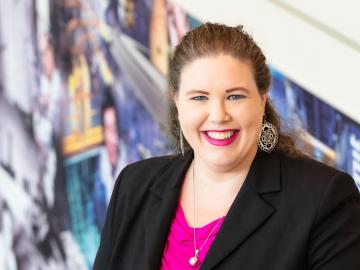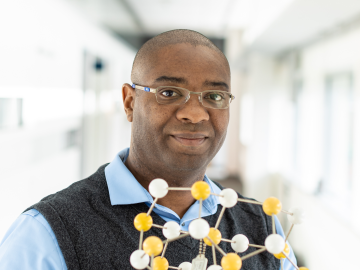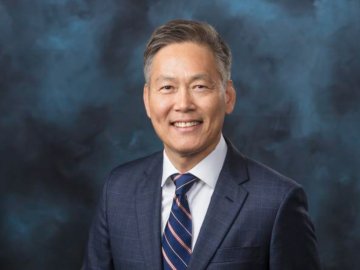
Filter News
Area of Research
- (-) Materials (119)
- (-) Neutron Science (43)
- Advanced Manufacturing (8)
- Biology and Environment (23)
- Clean Energy (100)
- Computational Biology (1)
- Computational Engineering (1)
- Computer Science (2)
- Energy Sciences (1)
- Fusion and Fission (9)
- Fusion Energy (8)
- Isotope Development and Production (1)
- Isotopes (5)
- Materials Characterization (2)
- Materials for Computing (17)
- Materials Under Extremes (1)
- National Security (8)
- Nuclear Science and Technology (12)
- Nuclear Systems Modeling, Simulation and Validation (1)
- Quantum information Science (1)
- Supercomputing (36)
- Transportation Systems (2)
News Type
News Topics
- (-) Advanced Reactors (2)
- (-) Biomedical (11)
- (-) Coronavirus (8)
- (-) Energy Storage (29)
- (-) Materials (54)
- (-) Materials Science (59)
- (-) Molten Salt (3)
- (-) Physics (18)
- (-) Transportation (13)
- 3-D Printing/Advanced Manufacturing (21)
- Artificial Intelligence (5)
- Big Data (1)
- Bioenergy (11)
- Biology (8)
- Biotechnology (1)
- Buildings (3)
- Chemical Sciences (25)
- Clean Water (1)
- Climate Change (5)
- Composites (7)
- Computer Science (12)
- Critical Materials (13)
- Cybersecurity (4)
- Decarbonization (6)
- Environment (11)
- Exascale Computing (1)
- Frontier (3)
- Fusion (5)
- Grid (2)
- High-Performance Computing (3)
- Isotopes (7)
- ITER (1)
- Machine Learning (2)
- Microscopy (18)
- Nanotechnology (31)
- National Security (3)
- Net Zero (1)
- Neutron Science (65)
- Nuclear Energy (7)
- Partnerships (8)
- Polymers (12)
- Quantum Computing (2)
- Quantum Science (13)
- Renewable Energy (1)
- Security (2)
- Space Exploration (3)
- Summit (4)
- Sustainable Energy (11)
- Transformational Challenge Reactor (1)
Media Contacts

Anne Campbell, an R&D associate at ORNL, has been selected for an Emerging Professional award from ASTM International. ASTM, formerly the American Society for Testing and Materials, is an international standards organization that develops and publishes voluntary consensus technical standards for a wide range of materials, products, systems and services.

Valentino “Tino” Cooper, a scientist at ORNL, has been appointed to DOE’s Basic Energy Sciences Advisory Committee for a three-year term. Cooper’s research elucidates the fundamental understanding of advanced materials for next-generation energy and information technologies.

Andrew Lupini, a scientist and inventor at ORNL, has been elected Fellow of the Microscopy Society of America.

Ho Nyung Lee, a condensed matter physicist at the Department of Energy’s Oak Ridge National Laboratory, has been elected a Fellow of the Materials Research Society.

A team of scientists led by the Department of Energy’s Oak Ridge National Laboratory designed a molecule that disrupts the infection mechanism of the SARS-CoV-2 coronavirus and could be used to develop new treatments for COVID-19 and other viral diseases.

ORNL has entered a strategic research partnership with the United Kingdom Atomic Energy Authority, or UKAEA, to investigate how different types of materials behave under the influence of high-energy neutron sources. The $4 million project is part of UKAEA's roadmap program, which aims to produce electricity from fusion.

Warming a crystal of the mineral fresnoite, ORNL scientists discovered that excitations called phasons carried heat three times farther and faster than phonons, the excitations that usually carry heat through a material.

Researchers from Yale University and ORNL collaborated on neutron scattering experiments to study hydrogen atom locations and their effects on iron in a compound similar to those commonly used in industrial catalysts.

Zheng Gai, a senior staff scientist at ORNL’s Center for Nanophase Materials Sciences, has been selected as editor-in-chief of the Spin Crossover and Spintronics section of Magnetochemistry.

Jordan Hachtel, a research scientist at ORNL’s Center for Nanophase Materials, has been elected to the Board of Directors for the Microanalysis Society.


